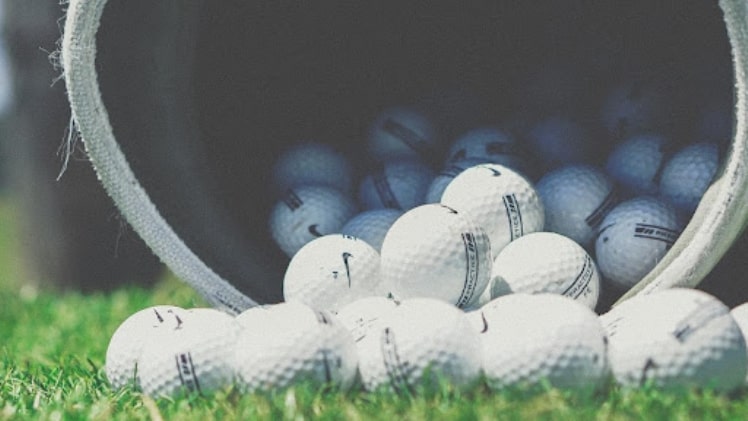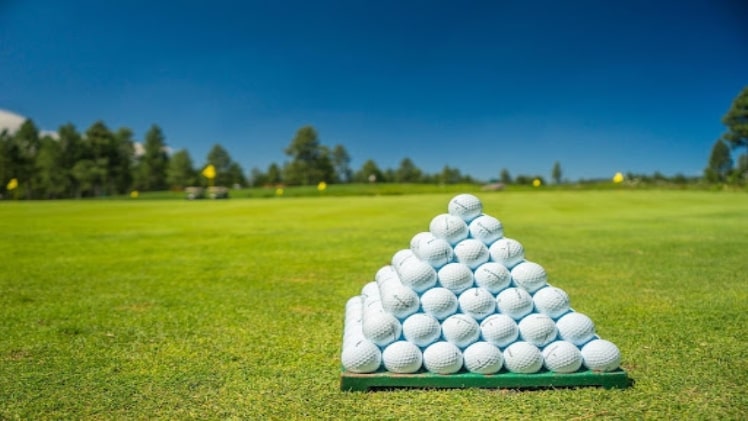Playing golf can be tricky, especially when the weather conditions are everything but perfect. It might not seem like it, but getting good results in the golf game has a lot to do with the outside temperature. Besides having difficulties with the technique, most players know that cold and hot weather also affects their golf balls. Through a few different experiments and personal experiences, players found a significant change in their golf ball performance. So, let’s see how different outside temperatures impact golf ball performance, as well as how it influences the golf game.
Playing golf during hot or cold weather
When it comes to golf in the US, people play golf in various weather conditions. In some states, the winters can be brutal, but others can have scorching hot summer days. Therefore, playing golf outdoors can be a challenge during different seasons. When weather conditions are far from ideal, most golf professionals rely on one of the courses for indoor golf Manhattan has to offer. These courses can often be the best solution since they provide a steady temperature during the game.
In order to understand how temperature influences golf ball performance, some curious golf players created an experiment. By tracking the way golf balls react to harsh temperature changes, they were able to understand how these conditions affect the overall game technique. The results were (not) surprising – golf balls are not entirely resistant to harsh temperatures. When conducting a speed of 100mph, golf balls that were exposed to both freezing and very hot temperatures have shown signs of compression and altered the results of the game. Researchers were surprised to find out that high heat made more influence on the golf game performance than freezing temperatures.

How does hot weather impact the golf ball?
When we think of a perfect day for playing golf, we think of the sun and a nice spring day. However, the optimal outside temperature is not the only factor that influences golf game performance. For the most part of the game, the ball gets direct sun exposure. Whether the ball is resting or flying through the air, players could notice that the sun can significantly alter the way the golf game reacts. Experience has shown that there were slight differences in the performance between the resting balls and those used for active play. In other words, the grass on the course can lower the overall temperature by a few degrees, especially during spring. Even after being exposed to sunrays, resting golf balls seemed to be a bit cooler while on the ground.
Overall, research has shown that hot temperatures mostly affect the speed of the ball. When the temperature of the ball is too hot, it reacts by moving slightly slower. Also, warmer balls can fly a bit lower, but the slightly warmer temperature has not shown a significant influence on golf ball performance.
Golf ball performance during cold weather
Just like with high temperatures, cold weather can have some impact on the golf game performance. What happens in freezing weather is that golf balls experience certain thermal expansion. The materials used to make the ball expand and contract in the cold, making it impossible to predict how the ball will react during the game.
Before the game starts, the cold temperature will directly change the shape of the ball in the resting state. However, the cold will also affect it while it’s flying, since cold air is denser than hot air. This will make the ball fly slower and lower than during hot summer days. If playing golf in an outside court during winter, a player should expect to lose a few miles per hour in golf ball speed. Professionals say that the optimal outside temperature for a golf game should be between 70 and 90 degrees.
Besides changing the performance of the ball, cold weather can also impact other aspects of the game. A nice, sunny day during spring will allow players to wear comfortable clothes, which will not be the case during winter. Therefore, cold weather will require bulky clothes and directly alter the flexibility and technique of the player.
Summary
Whether playing outdoors or indoors, professional golf players always hope for perfect temperature conditions. Playing golf during harsh weather can significantly lower the speed and height of the ball, making it impossible to predict the results. A different temperature can influence golf ball performance in many ways, but only to a certain degree. By keeping golf equipment in the optimal temperature conditions and using inside golf courses when necessary, players can avoid the most common problems with their ball performance.
Author bio
Travis Dillard is a business consultant and an organizational psychologist based in Arlington, Texas. Passionate about marketing, social networks, and business in general. In his spare time, he writes a lot about new business strategies and digital marketing for FindDigitalAgency.

